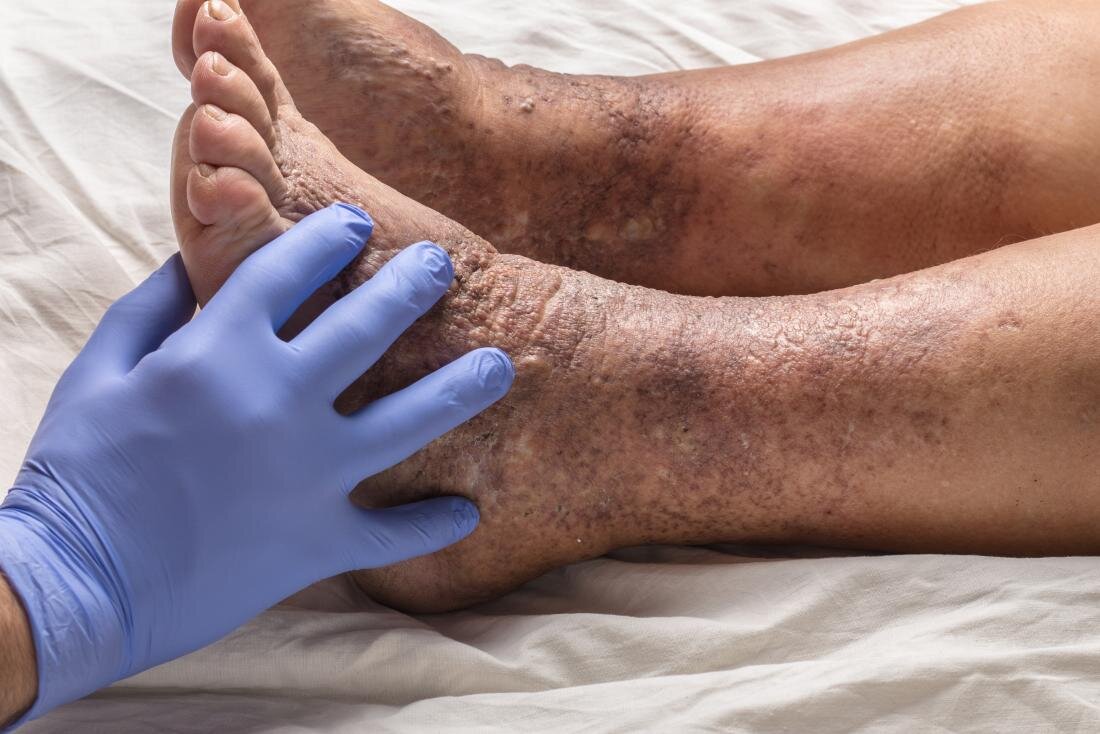Varicose Eczema
Eczema (or venous stasis dermatitis) happens when there are venous insufficiencies in the legs, usually occurring on the lower half of the legs.
As more fluid and pressure build, some of the blood leaks out of your veins and into your skin.
Eczema can happen to everyone but is more common in people aged over 50. Women are more likely to have eczema than men.
Symptoms of Varicose Eczema
Swelling. The first sign you notice might be swollen ankle, especially at the end of the day
Red rash
Leg heaviness or leg aching, especially after a prolonged period of sitting or standing.
Varicose veins covered with dry, itchy, or irritated skin
Red, discolored skin
Leg Ulcers
Other symptoms behind this type of eczema include varicose veins, achy legs, swollen legs, dry, itchy skin and more serious problems such as cellulitis. Treatment and management of Venous Stasis Dermatitis begin with treating the underlying circulatory problems.
Causes of Varicose Eczema
Chronic Venous insufficiency. Your legs have one-way valves that help blood move through and back to the heart from the legs. As the valves get damaged or weakened, blood flow has difficulty moving back to the heart.
Varicose veins
High blood pressure or a heart condition
Sitting or standing for a long time
Lack of Exercise
Obesity
Pregnancy
Varicose Eczema Complications
Eczema can worsen over time without proper treatment. It can lead to:
Intense itching sensations
Shrinking of the lower part of the leg
Worsening skin discoloration
Bacteria infection: Cellulitis, a serious infection that affects body tissues, can develop and spread through the leg.
Treatments for Varicose Eczema
As circulation is the main cause, your vein doctor may suggest surgery to repair faulty veins. To treat varicose eczema, our vein clinic is specialized in minimally invasive vein care and vein treatment. Our procedures include:
Wearing compression stockings can help to reduce swelling and boost circulation.
Frequent exercise and a healthy diet. Learn more about recommended diet and activities.
Ambulatory Phlebectomy: A minimally invasive procedure that removes varicose veins lying just beneath the surface of the leg. It is one of the most common and very effective procedures for vein treatment.
Endovenous Laser Ablation: The physician advances a small laser into the abnormal vein. The laser seals the faulty veins closed.
Sclerotherapy: The vein doctor injects a substance into the vein to close the veins.
Why Physicians Vein Clinics
Board-certified vein doctors with high skills and years of experience
12 convenient vein clinics across South Dakota, Iowa and Minnesota
Minimally-invasive procedures for varicose veins, spider veins and vein-related symptoms

